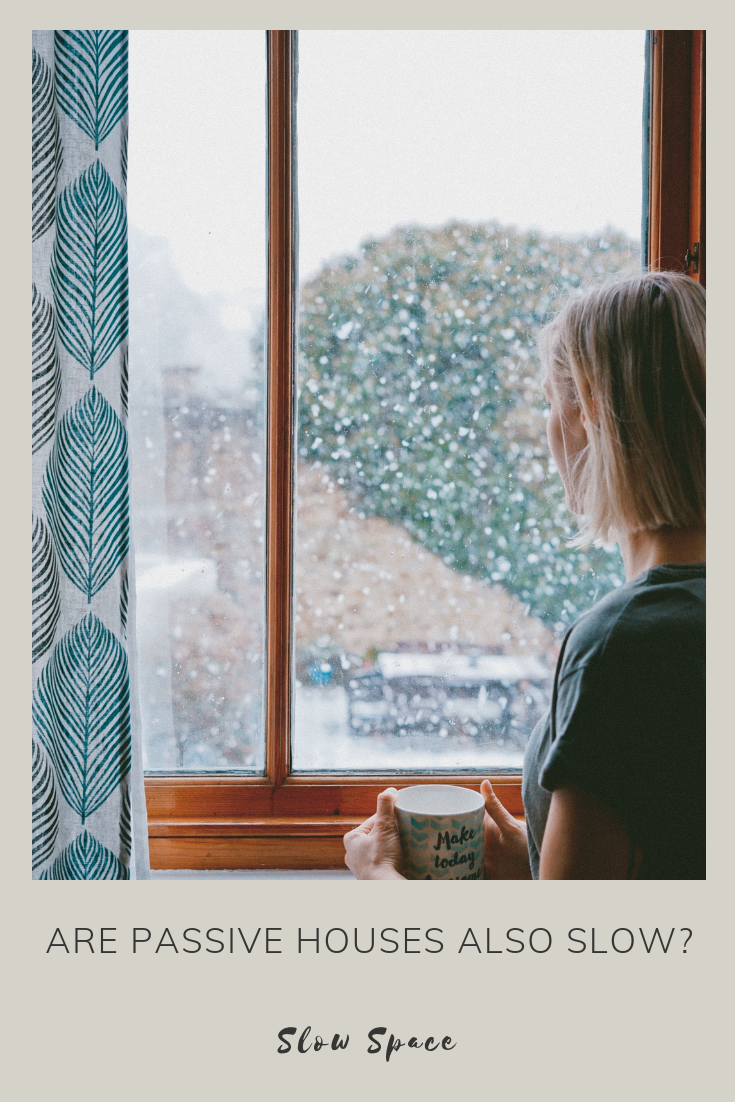When it comes to building methodologies “Passive” and “Slow” sound related, don’t they? In many ways, they are. Passive House (‘passivhaus’ in German) is a building approach and certification of energy efficiency that creates healthy and comfortable living environments. The Slow Space Movement encourages wellbeing by promoting buildings that are good, clean and fair. While the core principles of Passive House align with the Slow Space Movement, the energy-focused building approach could benefit from the Slow Space Movement’s holistic credo.
What is Passive House?
The Passive House approach maximizes energy efficiency to produce buildings that are not only environmentally friendly, but uniquely comfortable. Passive homes achieve such a high standard through ultra efficient insulation, orienting the building to maximize sunlight in the winter and shade in the summer, and an air-tight yet well ventilated enclosure. Passive homes often make use of solar energy to further reduce their carbon footprint. A well-insulated home takes advantage of the incidental internal heat sources such as appliances and our own body heat to add warmth in the winter. Through natural temperature regulation and fresh air circulation, passive homes improve our health and quality of life.
Why do we like it?
Passive House buildings directly improve our health. These structures make use of natural daylight which helps our circadian rhythms, productivity, emotional wellbeing and more. Passive houses also constantly circulate fresh air which is not only comfortable, but reduces the risk of mold, dust, pollen and other pollutants and allergens. When we spend 90% of our time indoors, the improved air quality in passive homes has a direct affect on our health. Furthermore, these buildings are so well insulated, there is incredibly little temperature fluctuation even in extreme weather conditions, thus regulating a health body temperature.
Passive homes also indirectly improve our wellbeing. By creating a home that reduces the need for electricity through daylighting and temperature regulation, Passive Houses are less dependent on technology and fossil fuels. Even if the heating system breaks in the winter, the house would remain comfortable for days. The level of insulation in a home also helps our quality of life. Imagine being able to sit in a cozy window nook in the middle of winter without the hint of a draft or cold air radiating from the glass. Moreover, a well insulated house reduces noise, creating a peaceful, quiet living environment.
Passive Homes also need to be very well built in order to be airtight. This means they are highly resilient to weather conditions and will last much longer than the typical house. Well-constructed homes not only benefit the homeowners, but support the work of local craftspeople and the communities around them.
What can be improved?
Passive House is a highly effective building methodology that creates efficient and healthy environments which we love; however, it is not necessarily a wholistic approach. One of the major issues we have with some high performance buildings is in material selection. For example, many Passive Houses are insulated with spray foam insulation which can be highly toxic.
The Slow Space Movement encourages the use of organic, renewable materials such as wood fiber insulation as an alternative. Wood fiber insulation can insulate a house well enough for Passive House certification and is non-toxic to people and the planet.
Toxic materials have a negative impact on the house’s inhabitants, the workers that build it and the planet. The Slow Space Movement promotes good design, clean healthy materials and fair labor practices. This includes creating a healthy environment for the workers during construction.
Of course, proponents of Passive House have no intention of using toxic materials or unfair labor. But it is all too easy in the construction industry to focus in on one goal and lose sight of the entire process. As we strive for Passive House standards, let’s maintain a holistic approach that considers energy efficiency along with good, clean and fair practices.






